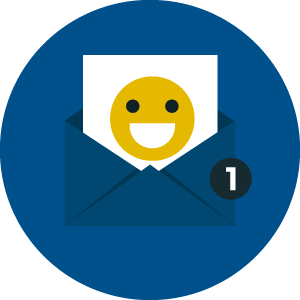How to use direct mail campaigns as an audience development tool that builds email lists and primes email subscribers to become paying magazine subscribers

Direct mail is a traditional marketing channel for publishers, but it also has a lot of value for audience development. Although the ROI for direct mail will be lower than for some of these other sources, it often provides the most valuable audience members in terms of annual spending per subscriber. When combined with the ability to mail large volumes to lists that are not available through other channels, direct mail is still a great way to drive website traffic, build email circulation and sell products.
There are seven major Audience Development models we have identified: search, social, syndication, email, retail, paid advertising, and direct mail. Today, I’m focusing primarily on direct mail, and using Green Gardens Network as an example. If you’re new to Mequoda, please take a moment to familiarize yourself with Green Gardens Network (GGN), our composite case study, and CEO Rose Harper, the embodiment of all our clients whose “example” we use as a teaching tool without revealing real publishers’ names or data.
Rose Harper sends a lot of direct mail to promote her magazine. Occasionally, as a test, instead of promoting her magazine directly, she promotes free reports so she can capture more email addresses and promote the magazine, tours and classes later through email.
We’ve found in the past that direct mail traffic that arrives on your RCLP will convert at the highest rate of any source we’ve measured. So, try leading with a free report and push people directly to your RCLP with an easy, vanity email address. Mequoda is a firm believer in the power of email newsletters as a marketing channel – so much so that we always pair a free Portal website with every subscription website we build and it is built specifically to give away content and harvest email addresses.
Using QR codes for easy email collection
QR codes can be used on direct mail efforts as well, and often are. Heck, you’ve probably seen them on your Heinz ketchup bottles. The code itself stores additional information and website links that you may not be able to print on your postcard or direct mail package. It can be scanned by anyone with a mobile phone that has an app to read QR codes.
While the idea of QR codes sounds genius, remember that it requires people to download an application in order to scan the code, which is not really an “on-the-go” type of procedure. However, if they are already set up to scan these codes, you can offer your readers above and beyond the printed page. Rather than asking everyone to remember your URL, you can simply drop a QR code onto your ad and the user can be automatically taken to a landing page where you can collect their email address while they download a freebie.
QR codes can absolutely be helpful and if your direct mail has the real estate to use them, you may try them out. The beauty of them is that you can use the same link-shortening tools like bitly to track who scans your code and visits your link. This is the next best thing for tracking response, next to creating custom URLs for all of your direct mail campaigns.
Using vanity URLs for direct mail
Instead of, or in addition to QR codes, direct mail should use trackable vanity URLs. A vanity URL is a domain you buy so that you can put an easy-to-remember URL in print. For example if you wanted to track your direct mail effort to a download for apple pie recipes, you wouldn’t want to print “http://www.applepieemporium.com/best-apple-pie-recipes/?trackingcodegoeshere” because that would be a huge waste of space and nobody would remember it. Even if you use a shortened bitly link, the direct mail opener needs to remember a random series of numbers. But if you give them a URL like “applepiefreebie.com”, they can easily remember it and type it in right away.
All you need to do to create a vanity URL is buy the domain, and forward it to the correct URL which includes the tracking code. Now, if you only use that vanity URL in your direct mail, you’ll know anyone who arrives through that tracking code came from direct mail. Voila!
Creating freebies to give away in direct mail
Conversion is the name of the game here. Not only should you create a compelling freemium that people want to download right from your direct mail package, but you can’t stiff them on the content. The whole goal is to attract them with high quality content, and convert them into paid subscribers later on. You can’t do that if you whip up some haphazard ebook and call it a day. If this all sounds good and you’re ready to go, read our posts about creating a freebie content model, 7 types of freemiums publishers give away, and our 35 ways to build an email list with freemiums.
One reply on “How to Use Direct Mail as an Audience Development Channel”
Vanity URLs can be used to track how effective is the direct mail campaign, a vanity url (branded link) is memorable, pronounceable and has 30% more chances to be used than a long link or a generic url shortener like googl or bitly.
My colleague recently wrote an article about using branded links to track off-line marketing:
https://blog.rebrandly.com/14-ways-to-track-offline-marketing-campaigns-with-branded-links/